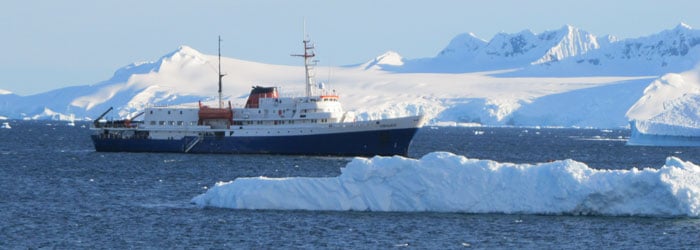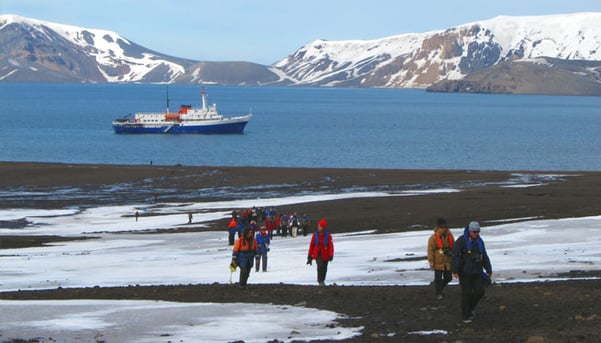Choosing the Right Antarctic Cruise for Your Group or Organization
Perhaps you are responsible for managing the educational travel program for the alumni or students of an academic institution, or maybe you are the group leader for a nature organization. You’ve made the decision to put the “White Continent” on your travel calendar. There are many factors to consider. Antarctic Peninsula or Weddell Sea? Gentoo, Chinstrap, or King Penguins? Icebreaking or ice-strengthened ship? How deluxe? Choosing the best option for your travelers can be a challenge as there is much at stake—not just the cost, but the long distance to get to your port of embarkation (12+ hours of flying time), possible severe weather conditions, and remote ports of call.
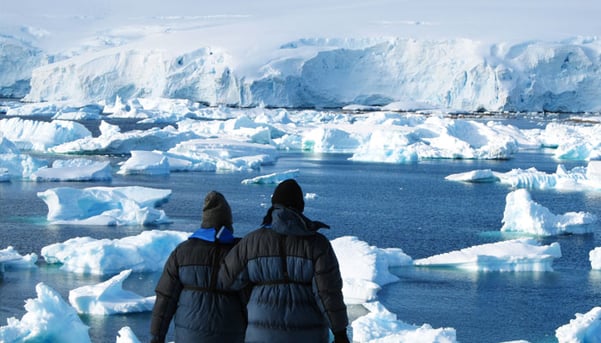
Why go to Antarctica?
Most visitors who choose Antarctica are experienced travelers who seek a true adventure, unusual wildlife, and often, the chance to record their 7th continent. Antarctica offers an experience like nowhere else on the planet. In addition to a variety of penguins and pelagic birds, marine mammals like seals and whales are plentiful. Dramatic landscapes of snow and ice dominate the horizon, while massive blue icebergs float by your ship window. The history of exploration by the likes of Shackleton, Scott, and Amundsen further attracts these adventurous travelers . For these reasons, Antarctica is all about the destination and less about the amenities. Discerning travelers will accept this if you set the right expectations. If luxury is a must, there are plenty of options but you may find fewer willing participants. Above all, an Antarctic cruise will form bonds among your group and with your organization that will last many years.
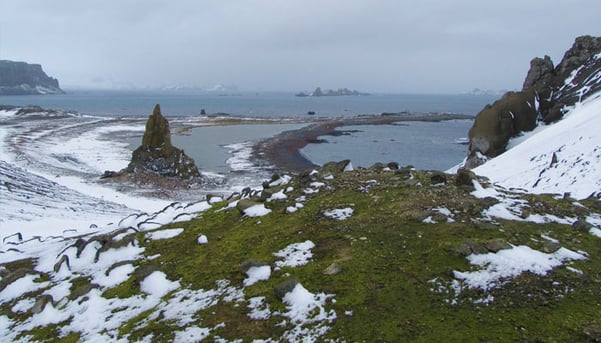
Choosing your itinerary
Most Antarctic cruises fall into several geographic categories, with the length of the cruise as a factor. The shorter, more popular cruises focus on the Antarctic Peninsula and are usually 8-10 days. They begin in Ushuaia, Argentina, cross the Drake Passage, spending several days along the Antarctic Peninsula’s western shore, and then return. A second group of longer cruises visit the Antarctic Peninsula and also add South Georgia and/or the Falkland Islands, with a chance to see King Penguins (which you won’t see on a peninsula-only cruise). Third, for intrepid travelers who may have already been to Antarctica, there are expeditions to the Weddell Sea, which seek out the more secluded Emperor Penguins and can include Australia or New Zealand instead of South America. Finally, “fly and cruise” itineraries eliminate crossing the Drake Passage by ship and accommodate a shorter time frame, but can be very costly.
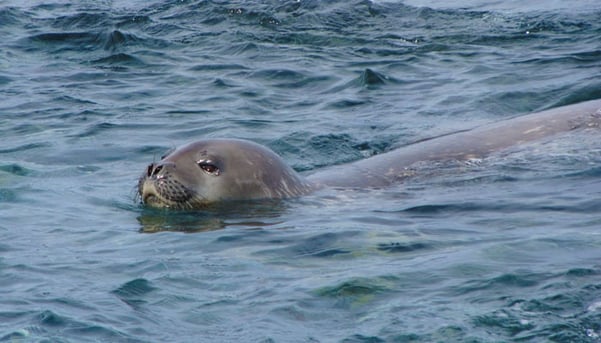
What budget are your travelers comfortable with?
Antarctica is an expensive destination, so don’t be surprised by high prices. The biggest price factors are the length of itinerary, level of cabin accommodations, ship amenities, and extra activities. Prices for standard cabins can easily reach $10,000 and higher. However, there are less expensive options, particularly if your main focus is seeing the wildlife and learning about the area’s natural history.
You know your travelers best, so use this information to narrow down your choice of itinerary and cruise operator. Lower-budget Antarctica cruises start at around $5,500 for a short itinerary and a quad or triple cabin. If your group can afford more, consider a longer itinerary to include the spectacular Falkland Islands and South Georgia. There are many high-end cruise ships for above $10,000 per person, but be aware of the ship size and learningopportunities. Holbrook favors smaller, research-type ships for the enhanced learning experience and ability to make more shore landings.
Ship Size Makes a Difference
One of the biggest factors in choosing a cruise is the size of the vessel. Holbrook only offers itineraries with ships that carry 150 passengers or fewer, due to the environmental impact and landing opportunities. Regulations set by the International Association of Antarctic Tour Operators (IAATO) permit only 100 passengers to go ashore at any one time. Travelers on vessels with over 200 passengers will not be able to disembark every day. IAATO is dedicated to promoting safe and sustainable tourism to Antarctica, and in the 25 years of existence has been a major force in keeping the continent pristine. For ships with 100 passengers or fewer, you can disembark every time the ship stops, heading out on Zodiac trips to watch wildlife or set foot on land. Smaller vessels can enter smaller, less traveled harbors according to IAATO regulations. They also provide a more intimate atmosphere, with a better chance to get to know your fellow passengers, to share stories, and make friends –particularly ideal for groups. On the flip side, a significant disadvantage of smaller vessels is that they can be less stable crossing the Drake Passage, known for its frequently rough seas.
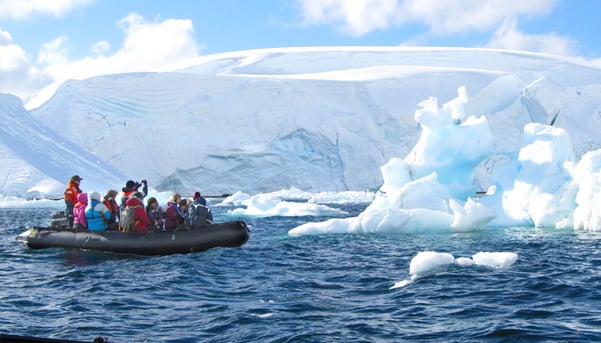
Education program, facilities, and activities
Perhaps the most important aspect of your Antarctic adventure is the learning opportunities from renowned experts. Your organization may bring along its own specialist, but the cruise operator should have an experienced staff of naturalists, marine biologists, ornithologists, geologists, and historians. Read up on the departure to see who will be sailing that date and whether it aligns with your group’s interests. You may be surprised how much knowledge exists among your travelers as well, including experienced photographers to share tips. Plus, you will want to look into the ship’s facilities, such as lecture area, library, research area, outdoor decks, and Zodiac fleet. Some vessels carry gear for kayaking, snowshoeing, and polar diving. Getting out of your cabin to spend as much time engaged in the program – on deck, in lectures, and on shore – is a must.

When to go – know the seasons in Antarctica
The majority of cruises operate between early November and late March. The Antarctic summer is short and weather and ice conditions can vary tremendously, so get to know the seasons; patterns are generally consistent year to year. The early season months (October and November) have much more sea ice. During this time you will see penguins returning to shore and beginning courting and nesting. This season often has itineraries that include South Georgia or the Falklands. Here you can see King Penguins lay their eggs, abundant fur seals, and elephant seals courting.
December though January is Antarctica’s peak season, with longer days, receding sea ice, and relatively calmer seas for crossing the Drake Passage. By now penguin chicks will be hatching and adults will be feeding hungry offspring. Birds and whales are seen more frequently. During this time, prices are highest due to demand.
The later season of February to March is best for viewing whales and fur seals in abundance on the peninsula and on South Georgia. Penguins are molting and growing adult feathers, while parents are returning to the sea to feed, with many colonies starting to empty.
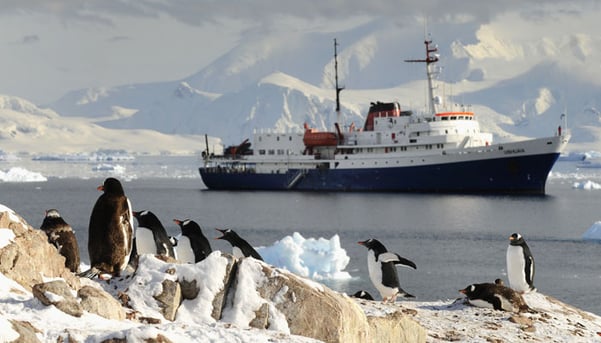
Finding the best Antarctic ship – based on your traveler profile
There are several dozen options for cruise ships sailing in Antarctica, so you will want to match the best ship with your group interest and budget. We recommend doing research and talking with your travel partner. One website to check is “Swoop Antactica.” Here are a few of our favorite options:
Best Value: M/V Ushuaia
Originally built for NOAA (National Oceanic and Atmospheric Administration), the M/V Ushuaia is ice-strengthened with plenty of deck space. The open bridge policy allows you to observe the navigational operations of the ship. Best of all, at only 88 guests, there is an intimate feeling with plenty of time for shore landings. Cabins are modest but the price is relatively affordable, and the ship has a staff of experienced scientists.
Deluxe: Ocean Endeavour
One our favorite in the Quark Expedition fleet, the Ocean Endeavour carries up to 199 guests with excellent amenities including a nautical lounge, extensive deck space for observation of landscapes and a nice aesthetic throughout. The vessel has more adventure options than the standard Antarctic ships, including kayaking, photography, and even mountaineering workshops. It even offers stand-up paddleboarding and cross-country skiing.
Deluxe: National Geographic Explorer
This ship is the crown jewel of the National Geographic (formerly Lindblad) fleet. Built for polar waters, it carries up to 148 guests and has excellent naturalist guides. There is an extensive fleet of Zodiacs and kayaks. This state-of-the-art vessel is an excellent choice if the budget permits.
all photos by Sandy Doss


